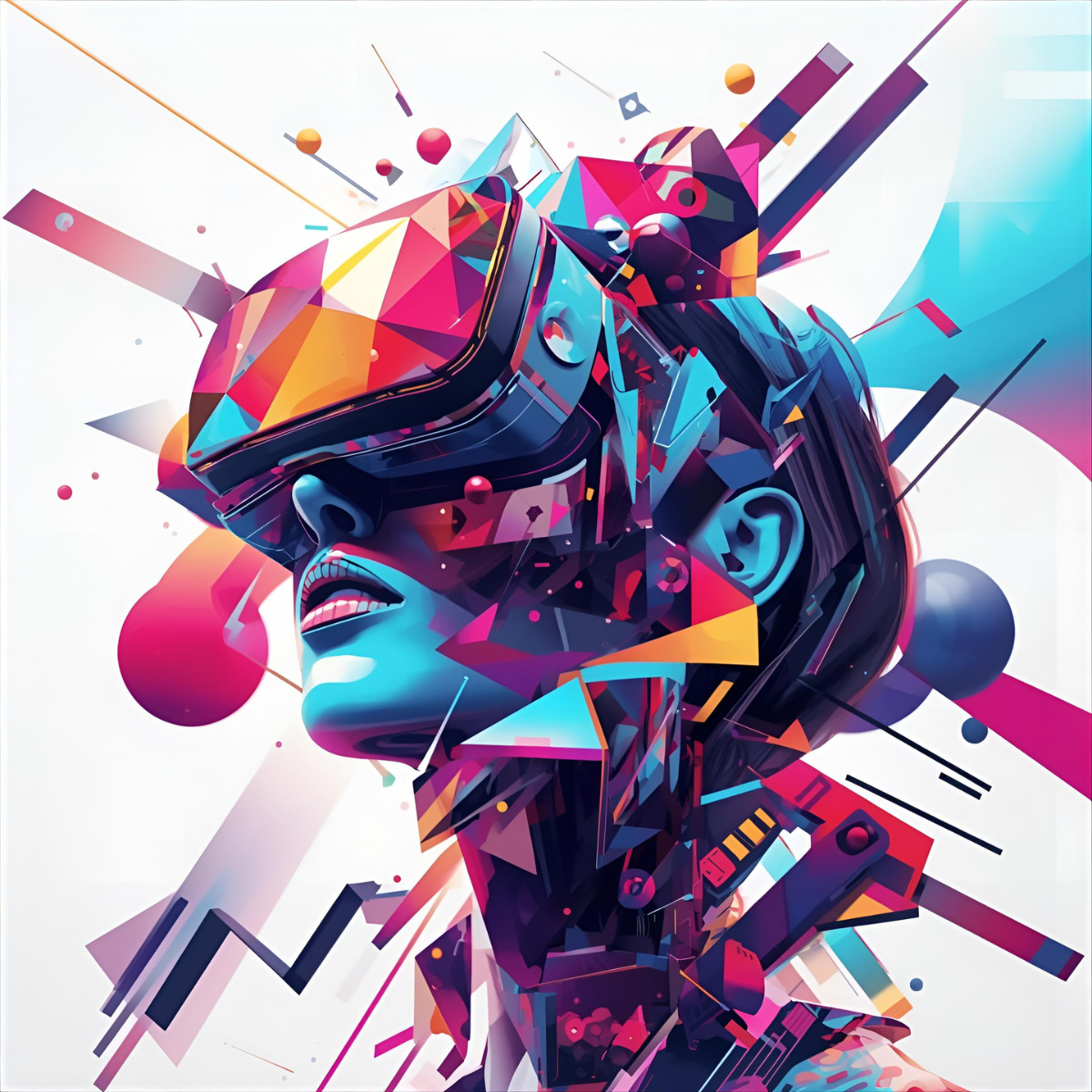
Introduction
In today’s rapidly evolving gaming landscape, game UX design has become the heart of player engagement. It’s no longer just about crafting beautiful visuals, it’s about creating intuitive, functional, and emotionally engaging experiences that make players stay.
At Uverse Digital, we understand that exceptional user experience in games means balancing aesthetic design with gameplay functionality. From XR simulations and multiplayer experiences to mobile and web games, our design philosophy ensures that every element, from button placement to menu flow, feels seamless and purposeful.
Great UX for game developers is about harmony between form and function. When players can effortlessly navigate, react, and connect within a game world, immersion follows and that’s where innovation begins.
Understanding Game UX Design
At its core, game UX design focuses on how players think, feel, and react during gameplay. It’s the invisible layer that connects a player’s intent with the game’s response, every click, movement, and decision must feel intuitive and rewarding.
Unlike traditional UX found in apps or websites, user experience in games revolves around emotion, anticipation, and flow. The goal is not just usability, but engagement, guiding players to experience challenge, satisfaction, and immersion simultaneously.
A well-designed UX considers:
- Player psychology: understanding motivation, attention, and cognitive limits.
- Game mechanics: ensuring systems respond predictably and consistently.
- Feedback loops: visual, audio, and haptic cues that reinforce player actions.
- UI layout and accessibility: making information easy to read, even in fast-paced environments.
For game developers, investing in UX early prevents frustration later, from confusing menus to overwhelming HUDs. When done right, UX for game developers builds trust and keeps players immersed in the experience, not distracted by its design.
Balancing Aesthetics and Functionality
Every developer wants their game to look stunning, but true success lies in balancing aesthetics and gameplay. A beautiful interface means nothing if it confuses the player or interrupts the rhythm of play. That’s why great game UX design focuses on harmony: visuals that enhance usability rather than overwhelm it.
Aesthetic design in games plays a critical role in player immersion. Colours set mood, typography defines readability, and animations create emotional feedback. Yet, the best designers know that every artistic decision must serve functionality. A well-placed button, a simplified map, or an intuitive gesture can transform how players experience a game.
Consider how:
- Elden Ring uses minimalistic menus to keep players focused on exploration.
- Fortnite’s clean HUD and colour-coded indicators help users make quick decisions in chaotic moments.
These examples prove that functional game UI/UX drives retention. Players instinctively prefer games that “feel right”, where everything from inventory management to camera movement responds naturally.
At Uverse Digital, our design approach ensures that every texture, transition, and interface choice strengthens usability. Whether developing a multiplayer battle system or an XR training simulation, we design for both beauty and purpose, ensuring no visual detail slows down gameplay.
The Role of UX Testing and Iteration
Great game UX design doesn’t happen by chance, it’s built through testing, feedback, and iteration. Every prototype, menu adjustment, and camera movement should be tested with real users to uncover friction points early.
UX testing allows developers to:
- Identify confusing navigation or unclear visual cues.
- Track player flow and drop-off points using analytics.
- Evaluate emotional response, frustration, delight, or confusion, during gameplay.
At Uverse Digital, our approach to game UX optimisation combines data-driven testing with creative iteration. We conduct A/B testing, capture real-time player telemetry, and continuously refine design elements until every interaction feels fluid. This iterative process ensures user experience in games evolves with player behaviour, improving engagement and performance with each test cycle.
Additional benefits of structured UX testing include:
- Early detection of usability issues, reducing costly post-launch fixes.
- Optimised control layouts and HUD design for quicker decision-making.
- Improved player retention and satisfaction, backed by measurable metrics.
- Cross-platform consistency, ensuring seamless UX across mobile, console, PC, and XR devices.
- Actionable insights for designers and developers, informing future updates and expansions.
By combining analytics, playtesting, and player feedback, studios can create intuitive, immersive, and highly engaging experiences. At Uverse Digital, we turn these insights into actionable design improvements that elevate gameplay and reinforce player loyalty.
Learn more about how we refine game experiences through our UI/UX Design Services
Integrating UX with Game Systems
A compelling game UX design d
oesn’t stand alone, it interacts directly with a game’s systems, mechanics, and performance. Players expect their inputs to translate seamlessly into the game world, whether it’s moving a character, executing an ability, or interacting with an in-game menu.
Key areas of integration include:
- HUDs and Interfaces: critical data such as health, inventory, or maps must be intuitive and accessible without disrupting gameplay.
- Control Systems: responsiveness across controllers, touchscreens, and XR devices ensures players maintain immersion.
- AI and Gameplay Feedback: UX decisions influence how players perceive difficulty, progress, and challenge.
- Cross-Platform Consistency: mobile, console, PC, and XR devices require interfaces that adapt without compromising usability.
The importance of UX engineering in games is supported by industry trends: the global UX design market is projected to nearly double from USD 11.41 billion in 2025 to USD 22.62 billion by 2030( By Motor Intelligence) reflecting how user-centered design is now a strategic priority. In the UK, demand for UX/UI specialists continues to grow, with gaming and immersive tech sectors reporting increased vacancies and competitive salaries (Intelligent People, 2024).
At Uverse Digital, we combine this industrial insight with hands-on expertise: integrating UX principles with game mechanics, AI-driven interfaces, and XR technologies to ensure experiences are not just visually appealing but technically robust. Every system, from multiplayer coordination to 3D asset interaction, is designed for fluid, intuitive gameplay, enhancing engagement and retention.
Why UX Matters in Modern Game Development
The gaming industry is no longer just about graphics or mechanics, UX quality drives player engagement, retention, and commercial success. This is particularly true in the UK, where the gaming sector continues to expand both in size and sophistication.
Key industry insights include:
- The UK had over 39.9 million active gamers in 2025, illustrating a massive domestic audience for high-quality gaming experiences (Statista, 2025).
- Employment in UK gaming studios rose by 8% year-on-year to May 2024, signaling growth in game development roles, including UX-focused positions (Prospects.ac.uk, 2024).
- UX/UI design roles in the UK are in high demand, with competitive salaries for both entry-level and senior positions, reflecting the strategic importance of user experience in game production (Intelligent People, 2024).
- Globally, the UX design market is expected to grow from USD 11.41 billion in 2025 to USD 22.62 billion by 2030 (Mordor Intelligence, 2025), highlighting that investment in UX is now a critical business strategy.
These numbers underline a key point: investing in UX is no longer optional. High-quality game UX optimisation not only improves player satisfaction but also reduces churn, accelerates onboarding, and enhances monetisation opportunities.
At Uverse Digital, we apply these principles across all projects, from multiplayer games to immersive XR training, ensuring that each interaction feels natural and every system functions seamlessly. By integrating aesthetic design, functional mechanics, and data-driven testing, we help studios create experiences that stand out in an increasingly competitive market.
Conclusion
A successful game isn’t defined solely by graphics, story, or mechanics, it’s shaped by the player experience at every interaction. Game UX design ensures that visuals, controls, feedback, and systems work in harmony, creating immersive worlds that feel intuitive, engaging, and rewarding.
In today’s competitive UK gaming market, with millions of active players and a growing demand for skilled UX design, investing in UX optimisation is crucial. Studios that prioritise functional game UI/UX see higher engagement, better retention, and improved commercial outcomes.
At Uverse Digital, we specialise in integrating UX principles with game systems, XR technologies, and AI-driven interfaces. Our approach ensures that every interaction, from HUD navigation to 3D content interaction, is seamless, intuitive, and immersive.
Ready to elevate your game’s UX?
Partner with Uverse Digital to design immersive, high-performance gameplay systems that delight players and drive results.
Contact us today
FAQs
Q1. What is game UX design?
A: Game UX design is the practice of creating seamless, intuitive, and engaging player experiences. It combines visual design, interface layout, feedback systems, and player psychology to ensure interactions feel natural and enjoyable.
Q2. How does game UX differ from standard UX?
A: While traditional UX focuses on usability and efficiency, game UX balances usability with player emotion, immersion, and engagement. It considers how players feel, react, and stay motivated throughout gameplay.
Q3. Why is UX important in multiplayer and XR games?
A: Multiplayer and XR experiences rely heavily on intuitive controls, clear interfaces, and immediate feedback. Poor UX can lead to confusion, frustration, or disengagement, while well-designed UX keeps players immersed and connected.
Q4. What metrics measure game UX success?
A: Key metrics include player retention, session duration, onboarding completion rates, in-game task success, and user satisfaction scores. Data-driven insights help optimise game UX systems over time.
Q5. How much does UX impact game development cost and timeline?
A: Investing in UX early reduces post-launch fixes and player churn, saving long-term development costs. Proper UX planning streamlines iterations and ensures smoother adoption across platforms.
Q6. How can Uverse Digital help with game UX optimisation?
A: Uverse Digital combines UX strategy, AI-driven interfaces, immersive XR design, and system integration to create engaging, functional, and visually compelling gameplay experiences. We ensure every interaction is optimised for both enjoyment and performance.
About the author : Uverse Digital
Stay Ahead of the Game
Get XR insights, dev tips, and industry updates straight to your inbox
Join our insider list for cutting-edge content on game development, performance optimization, and immersive experiences — curated for industry leaders like you.



